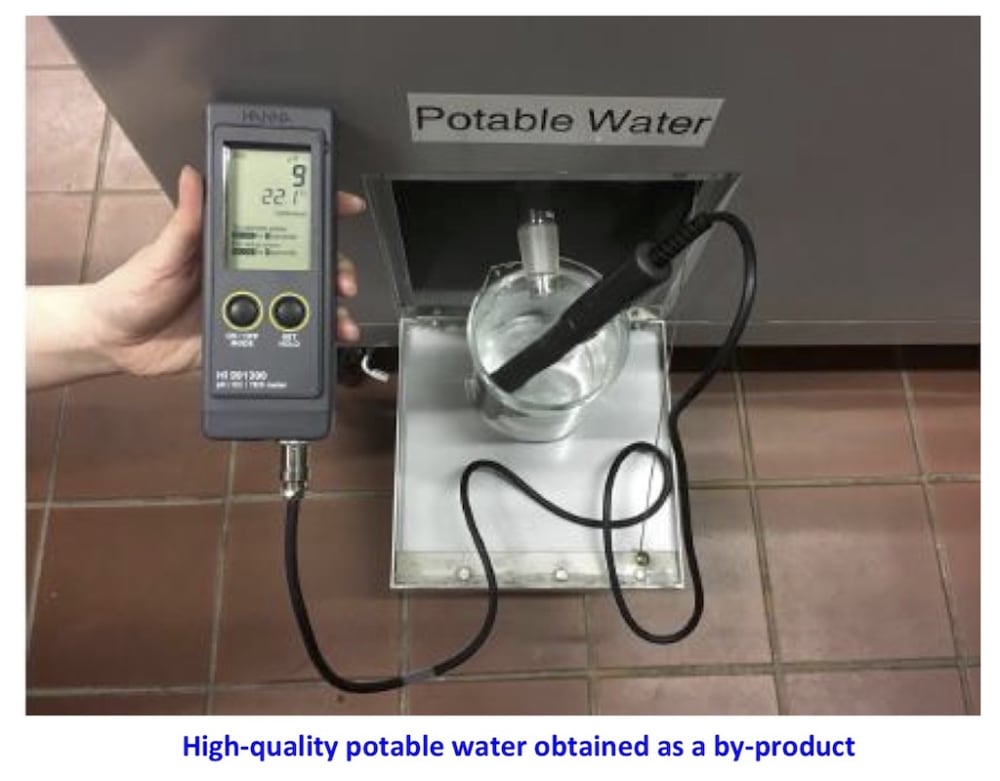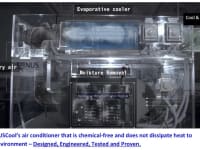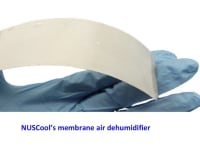

In extreme hot summer, many people, particularly the elderly, can suffer heat-stroke and die. For example, in 2018, there were more than 65,000 global deaths due to extreme heat wave. Therefore, air-conditioning is no longer a luxury but a necessity.
Air conditioners literally save lives and improve quality of life both at home and at work. So why are air conditioners not available everywhere? Present day air conditioners, invented in 1902, face a number of challenges. Firstly, they consume huge amounts of energy; secondly, they cause significant environmental detriment due to the use of chemical refrigerants; and lastly, to cool a desired location, they dissipate large amounts of heat to the environment; creating undesirable heat zones.
Conventional water-based swarm-coolers are not appropriate for tropical climates as they work by spraying fine water particles on air. As such, humidity increases while cooling. To obtain dry air, silica-gel is widely used. However, doing so is expensive and energy-intensive as it needs high-quality heat to purge out the water once absorbed. Since membranes have been used to produce clean water, I toyed with the notion of using membranes to sieve out water molecules from air.
Having conducted research on water-based coolers, I knew that I could re-configure my cooler to one that could cool without increasing its humidity and without using chemical refrigerants. Hybridizing the membrane and the water-based coolers, I demonstrated that I could obtain cool, dry air. The next generation of air conditioner was born.
Most importantly, due to the use of water as a cooling medium to remove heat from the air and membranes to remove moisture, the newly evolved air-conditioner does not produce heat to as a byproduct – rather it produces cooled and dry air to any desired space.
In 2017, after 3 years of intensive R&D, NUS tested the first hybrid membrane water-based air conditioner that is capable of cooling a 100 meter square-feet room without dissipating heat to the environment. Additionally, this disruptive air conditioner can double up as a water harvester from humid air for tropical countries experiencing water shortage such as India, Thailand, Cambodia, Myanmar and Vietnam.
As far as capital cost is concerned, compared to state-of-the-art air conditioners, it is expected to be about 20 to 40% less expensive. The operational cost is also 30% less due to lower energy consumed to provide cooled and dry air.
NUSCool air conditioner has the potential to positively impact industries such as transportation, and function in data centers and offshore structures to provide energy-efficient and environmental friendly cooling. NUSCool is a disruptive technology at the heart of the water, energy and environment/sustainability nexus. NUSCool can be replicated in other parts of the world, to help provide sustainable cooling for everyone.
NUSCool air-con technologies will help to lessen global warming, reduce death rates, and make cities become distinctive global “green” cities. Envisage a future where NUSCool air conditioners replace existing air conditioners to provide comfortable air without warming the planet. Here is to a sustainable, cool future.
Video
-
Awards
-
 2019 Sustainable Technologies Honorable Mention
2019 Sustainable Technologies Honorable Mention -
 2019 Top 100 Entries
2019 Top 100 Entries
Like this entry?
-
About the Entrant
- Name:Kian Jon Ernest Chua
- Type of entry:individual
- Patent status:patented








